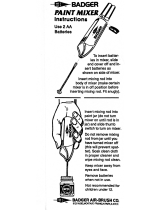
GENERAL INFORMATION
62.9692.01 Page 3
I . GENERAL INFORMATION
1. INSTRUCTIONS FOR SAFETY AND USE
1.1 INSTALLATION AND INITIAL OPERATION
1.2 OWNER'S OBLIGATIONS
1.3 USE AS PRESCRIBED
1.4 SAFETY-CONSCIOUS WORKING
1.5 AFTER-SALES SERVICE AND REPAIR
S The installation, adjustment and initial opera-
tion of the appliance must be carried out
according to the manufacturer's instructions
and only by an authorised specialist.
S Installations for the supply of electricity and
gas must be carried out by approved special-
ists in compliance with specific national and
local regulations. They bear the responsibility.
S The appliance must not be placed in opera-
tion until the user has become familiar with its
operation. The operating instructions and the
related safety precautions must be followed
precisely. Follow strictly the attention and
warning label indications on the appliances.
S The manager is responsible for ensuring that
all components relevant for safety are in per-
fect working order at all times. The operating
condition of these components must be exam-
ined by an authorized technician at least once
a year and any defects remedied if required.
S If the safety valve in the boiler blows off, after-
sales service must be requested without
delay to establish the cause and remedy it.
S The appliance must only be used for cooking
food in commercial kitchens. The appliance
has only been approved for supervised oper-
ation by trained persons.
S Closed containers (jars, cans, bottles, tubes,
etc.) must not be heated owing to the danger
of bursting and injuries.
S The appliance must not be filled above the
level mark 4 cm below the boiler rim.
Depending on the type of food to be cooked,
filling must be less so as to prevent bubbling
over.
S The stirrer is only to be operated with the lid
closed.
S The stirrer may be used no more than 3
hours under heaviest load (e.g. mashed
potatoes).
S During operation, no objects are to be placed
on the lid
S The safety valve on the outer jacket of the
boiling pan must not be actuated by opera-
tors (lifting or turning the cap) because hot
steam is released, causing injuries.
S Devices on wheels set up in block configura-
tion must be checked before each start-up
whether the potential equalization is con-
nected with the neighbour equipment. The
connection may be done only by authorized
technical personnel.
S Spraying the appliance or parts of it with a
high-pressure cleaning device may cause
malfunctions and is not to be done.
S To avoid damage to the appliance, do not let
water flow from the mixer tap onto the cook-
ing plates.
S When putting oil, fat, water or ingredients in
the preheated hot boiler, they may splash -
danger of burning!
S Always use the handle to open the cover.
Note that while doing so, hot air or steam
may flow out or hot fat may spit out - danger
of burning!
S Keep your distance from the lid closing area
when closing the lid - danger of injury!
S To avoid damage to the appliance the mixer
tap outlet must be to the front before the lid is
opened or closed.
S Cold food is not to be added to the unit for
retherminalization while hot food is operating
in a hot food holding mode.
S Take care when turning on the drain tap.
Depending on the food to be cooked, the
drain stream can have varied behaviour and
Keep your distance when passing or driving
by with a truck. The drain cock sticks out.
S Tilting is only to be carried out slowly to avoid
the contents spilling over the rim.
S Hot steam can be expelled on opening the
lid. Staff must take appropriate measures
(stand well back) to avoid injuries.
S Appliances on wheels must be fastened with
the wall.
S The area around the tilting boiling pan must
be kept free. Tilting is only to take place with
the lid fully open. - danger of burning!
S Boiling pans of this design and operating
mode do not require special acceptance
tests. They are subjected to a pressure and
operating test which meets the regulations on
the manufacturer's premises. Recurrent
pressure testing is not compulsory. To ensure
the complete operating efficiency and safety
of appliances, however, owners should
arrange for personnel authorised by the man-
ufacturer to check on all safety equipment
and to conduct pressure tests at regular
intervals.
S In the event of a permanent fault which inter-
feres with operation, the appliance must be
switched off and disconnected from the
power supply.
S Repair, maintenance work and other adjust-
ments are only to be carried out by an author-
ized specialist. The valid local and national
regulations must be observed. This applies
especially to burners, ignition, safety and con-
trol elements. Parts requiring replacement are
only to be replaced by original spare parts.
Periodic tests for gas leaks must be carried
out. A service contract is recommended.
S Cleaning and maintenance must be done only
when the heating surfaces are cold. Do not
use inflammable liquids to clean the appli-
ance.
S An obligatory service check is required
annually.















